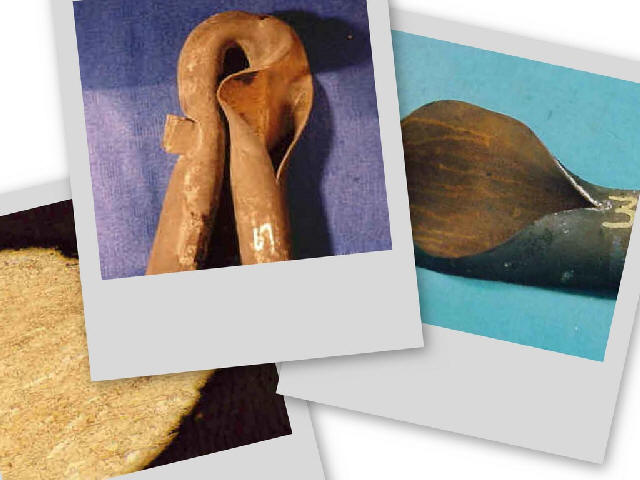|
Boiler Tube
Failure-Short Term Overheating
The simplest explanation for all "short-term" overheating
failures is: when the tube metal temperature rises so that the
hoop stress from the internal steam pressure equals the tensile
strength at elevated temperature, rupture occurs.
Regardless of the location within the boiler that these failures
occur, the appearance is similar.
Short-term overheating frequently exhibits a thin-lipped
longitudinal rupture, accompanied by noticeable tube bulging,
which creates the large fish-mouth appearance shown in the
photomacrograph.

These
failures display considerable ductility; the thinning at the
failure lip may be more than 90% of the original wall at the
instant of rupture. The microstructures throughout the failure
will usually indicate, in the case of ferritic steel, the peak
temperature at the time of failure. For ferritic steels there is
a transformation from ferrite and iron carbide or pearlite, to
ferrite and austenite. This temperature is referred to as the
lower-critical transformation temperature.
While these microstructures and the
estimated peak temperature at the time of failure cannot
predict the sole cause of the failure, the metallurgical
analysis can suggest the kind of boiler-operational problem that
is likely to be the cause of the rupture.
|



